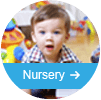STEAM Education: Igniting Passion for Science, Technology, Engineering, Arts, and Mathematics in Early Learners
“STEAM education” is a concept that not only seeks to engage even the youngest children in science but also in aspects of the arts, showing how the two are linked as part of a greater whole. It can form part of an early learning program for toddlers.
What is STEAM Education and how is it relevant for an early learning program for toddlers?
In this context, STEAM Education stands for Science, Technology, Engineering, Arts and Mathematics.
At its highest level, this is more of a philosophy than a ‘thing’. It stresses the importance of early learning centre-type approaches but also how these can be used to nurture an interest in the sciences and science-related subjects. That’s because those skills are seen as being critical to humankind’s progress and survival in the years to come.
However, it also recognises how dangerous it can be to assume that the Arts and Sciences are two different things. For example, architects need to have a firm grasp of basic engineering principles but at the same time, their design and artistic flair may make the difference between a building being seen as ‘ugly’ or aesthetically pleasing.
In part, STEAM is concerned that our society has increasingly become segmented, insofar as even from an early age, children can begin to be categorised as being either good at science or the arts. That view risks missing the opportunities arising when someone is a skilled practitioner in both disciplines. Leonardo da Vinci is the classically cited example of one such person, for whom the arts and sciences were part of the same overall being.
Surprising as it might sound, many suggest that STEAM education approaches to education should be integrated at very young ages, including in an early learning program for toddlers.
How can toddlers be taught science and mathematics?
A starting point is that nobody is expecting a child of three to have achieved the status of rocket scientist!
What can be achieved is to help a child understand the relationship between things such as something they’ve constructed and how easy it is to use. So, to construct something of plastic bricks requires an interest in basic building physics, covering things such as if it’s too tall then the base will need to be expanded or it will fall over.
It’s a small conceptual step to then ask them to decorate and paint their tower. As a result of trying to do so, they may realise that it might have been easier and looked better if they’d built something slightly wider and able to carry more decoration etc.
This is developing an awareness of what in later schooling they’ll recognise as being engineering and art plus the relationship that may exist between the two – i.e. ‘function and form’.
Isn’t this just normal play?
To some extent, these concepts do arise during play. However, STEAM education programs positively encourage these as part of a pre-defined program
One major objective is to try and help children avoid building up presumptions about whether or not ‘painting’ is interesting but ‘building’ isn’t. Even worse is when children start to think of themselves at a very young age as being good at art but bad at things like building and numbers (or vice-versa).
Do toddlers have predispositions in terms of their abilities?
This apparently simple question has been the cause of furious argument for well over a century but most childcare and educational specialists now accept that some children may be more gifted in some subjects than others.
However, it can be very difficult to tease apart the issues associated with genetics and those that arise from unstructured play-education and unintentional influences. So, a child told after struggling with numbers that they “aren’t good with numbers” may pick that up from an adult carer and carry it forward into their future preferences.
STEAM doesn’t deny that some children may have more natural abilities in some areas and less in others. What it does is to try and encourage children to move on from these assumptions and to deploy their interests into as wide a subject area as possible.
If you’d like to know more, why not contact us for a discussion and possible visit to our centre?













